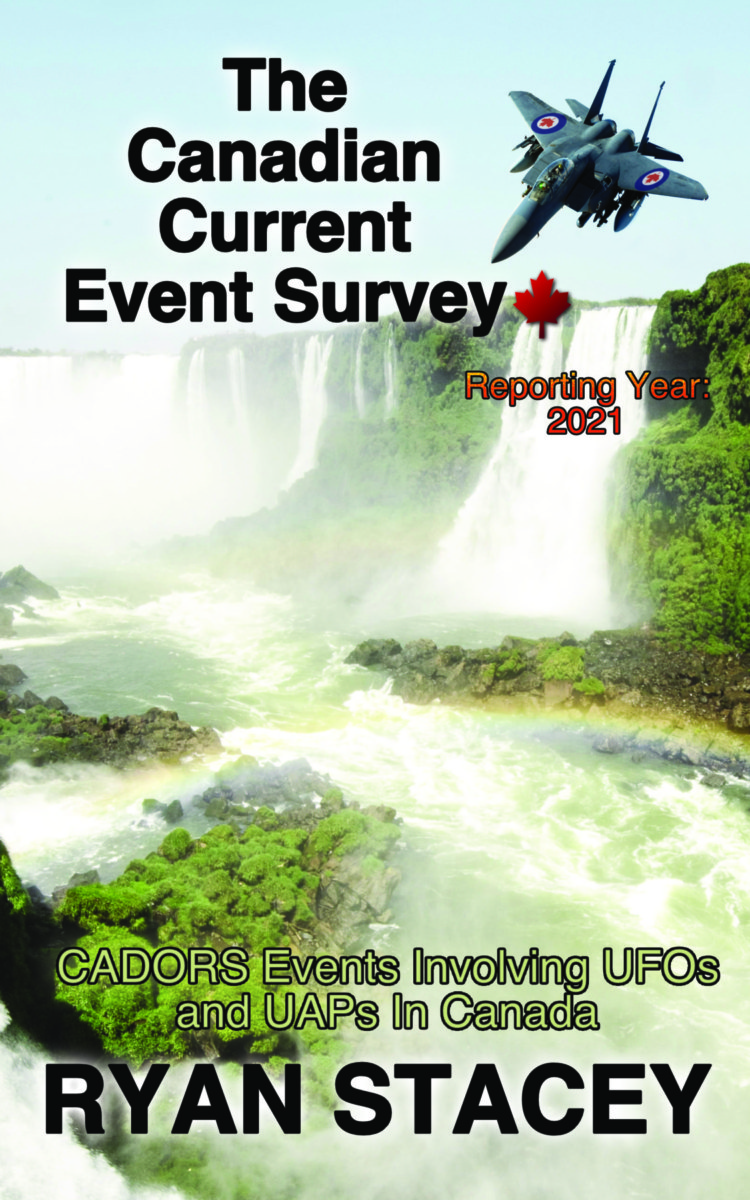The Rise in UFO Reports: A 2023 Overview

A recent article by CTV News highlighted the increase in UFO or UAP (Unidentified Aerial Phenomena) reports over Canada in 2023, as recorded in Transport Canada’s aviation incident database.
The reports, mainly from pilots, describe observations of unusual lights and objects. These objects are noted for their erratic movements, which deviate from the typical flight patterns of conventional aircraft or known natural phenomena. Such descriptions naturally spark intrigue and curiosity, given the longstanding human fascination with the possibility of extraterrestrial life and unknown aerial phenomena.
Analyzing Aerial Anomalies: A Balanced Approach
However, it’s essential to approach these reports with a balanced and analytical view. This means considering all possible explanations before jumping to conclusions. For instance:
- Erratic Movements: The described erratic movements of these objects could be due to various factors. It’s important to consider if these movements could be attributed to optical illusions, atmospheric conditions, or even the relative motion between the observers (pilots) and the objects.
- Unusual Lights: Lights observed in the sky can have multiple sources. It’s vital to analyze whether these lights emanate from manufactured objects like airplanes or drones or natural phenomena like meteorological conditions or astronomical objects.
- Differentiating Phenomena: A critical aspect of such analyses is distinguishing between unexplainable phenomena and identifiable objects. Initial sightings explained that many past sightings were later attributed to identifiable sources like commercial satellites, weather balloons, or even highly advanced but terrestrial military aircraft.
- Consideration of Conventional Explanations: It’s crucial to exhaust all conventional explanations before classifying any sighting as unexplained. This includes considering new technologies, such as drones or experimental aircraft, which might need to be more widely recognized by the public or even certain sections of the aviation community.
- Scientific Approach: A scientific approach involves gathering as much data as possible, including radar data, pilot reports, meteorological conditions, and available visual recordings. This data should then be analyzed systematically to rule out known phenomena and identify anomalous characteristics that cannot be explained with current scientific understanding.
While these pilot reports are undoubtedly exciting and warrant further investigation, it is essential to maintain skepticism and methodically consider all possible explanations. This approach ensures that conclusions are based on evidence and rational analysis rather than speculation or sensationalism.
Seeking Evidence: The Pillars of UAP Investigation
Evidence is critical in understanding these sightings:
- Detailed Reporting: The foundation of understanding any UFO sighting starts with comprehensive descriptions from the observers, in this case, the pilots. These reports should include specifics like the time, location, duration, and detailed descriptions of the object’s appearance, behaviour, and associated sounds or other sensory effects. The more detailed the report, the better the understanding of what was observed.
- Radar and Sensor Data: Objective records from radar and other sensors, such as infrared or electromagnetic field detectors, are invaluable. Such data can confirm the presence of an object when it correlates with visual sightings, providing a more reliable and tangible record than eyewitness accounts alone. This data can also help determine the object’s speed, size, and trajectory.
- Photographic/Video Evidence: Visual evidence has become increasingly important in the age of smartphones and high-resolution cameras. However, authenticity is critical. Photos and videos must be authenticated to ensure they have not been tampered with or doctored. This evidence can provide vital visual cues about the object’s shape, luminosity, and behaviour.
- Scientific Analysis: Expert evaluation is crucial for a grounded understanding of these phenomena. Scientists from various disciplines, including physics, astronomy, and aeronautics, can analyze the available data to deduce potential explanations. This analysis can include evaluating known natural and manufactured phenomena that could account for the sightings.
5. Official Investigations: Investigations by government or aviation authorities can lend credence to the findings. These bodies can access a broader range of data and have the authority to gather information from various sources, including military and private aviation entities. Their conclusions often carry weight in the scientific and general communities.
6. Cross-Verification: Corroborating reports from independent sources strengthens the validity of the sightings. If multiple reports from different observers align, especially when combined with radar and sensor data, the case for an unidentified phenomenon becomes stronger. This cross-verification helps filter out single-observer errors or hoaxes.
Each type of evidence plays a crucial role in building a comprehensive understanding of UFO sightings. By combining these various forms of evidence, researchers can approach these phenomena with a scientific, evidence-based methodology, moving beyond speculation to more grounded theories and explanations.
Staying Grounded: A Factual Approach to UAP Research
In addressing UFO sightings, particularly those reported by pilots over Canada in 2023, it’s crucial to maintain a disciplined approach focused on factual information. This stance involves several fundamental principles:
- Prioritizing Verifiable Facts: The cornerstone of any investigation into UFO sightings is the reliance on verifiable facts. This means giving precedence to information that can be objectively confirmed and measured, such as time and location of sightings, physical descriptions of the objects, and any recorded data from instruments or sensors.
- Avoiding Speculation: It’s easy to speculate about intriguing subjects like UFOs. However, speculation can lead to misinformation and sensationalism, which can obscure the truth and hinder understanding. By consciously avoiding speculation, we ensure that the investigation remains grounded in reality and is more likely to lead to credible explanations.
- Emphasizing Robust Evidence Gathering: The evidence-gathering process must be thorough and methodical. This includes collecting eyewitness accounts, radar and sensor data, photographic or video evidence, and other pertinent information. The integrity of this process is paramount; the evidence must be collected in a manner that preserves its accuracy and reliability.
- Analyzing evidence Rigorously: Once evidence is gathered, it must be analyzed critically. This involves assessing the reliability of each piece of evidence, looking for corroborating data from independent sources, and applying scientific principles to interpret the findings. Analysts should be unbiased and skilled in distinguishing between credible evidence and anomalies or errors.
- Consulting with Experts: Engaging with experts in various fields (such as aviation, physics, atmospheric science, and astronomy) can provide valuable insights into the phenomena. These experts can offer perspectives based on their scientific knowledge and experience, which can be crucial in accurately interpreting the data.
- Transparency and Openness: Openly sharing findings and methodologies can invite peer review and additional insights. This transparency is essential in building credibility and ensuring that conclusions are based on solid evidence.
Adhering to these principles keeps the focus on what can be known and verified, steering clear of the allure of sensational but unsupported theories. This approach serves the immediate need for understanding specific sightings and contributes to the broader scientific understanding of unexplained aerial phenomena.
The Path Forward: Collaborative Efforts in UAP Research
The future of research into Unidentified Aerial Phenomena (UAP) is contingent upon a multidisciplinary collaboration and the persistent, detailed reporting of sightings. This approach is key for several reasons:
- Multidisciplinary Collaboration: UAP research is not confined to a single field of study; it intersects with various scientific disciplines. Astronomers can provide insights into celestial phenomena that might be mistaken for UAPs. Physicists can offer theories on observed flight patterns and properties of UAPs that defy conventional understanding. Aviation experts and meteorologists can help identify common misinterpretations of known aerial or atmospheric phenomena. By bringing together experts from these and other fields, a more comprehensive understanding of UAPs can be achieved.
- Technological Contributions: Technological advances play a crucial role in UAP research. Improved radar systems, satellite imaging, and sophisticated sensors can offer more detailed and accurate data. The development of AI and machine learning can aid in analyzing large datasets to identify patterns or anomalies. Collaboration with technologists can thus significantly enhance the quality of UAP research.
- Global Data Sharing and Cooperation: UAPs are not bound by national borders, making international cooperation essential. Sharing data and research findings globally can help build a more complete picture of UAP activity. This also involves standardizing reporting mechanisms so that data from different countries can be easily compared and analyzed.
- Meticulous Reporting: The detailed and systematic reporting of UAP sightings is fundamental. This involves recording the sighting itself and contextual information like time, location, weather conditions, and any other relevant observations. Such detailed reporting can help distinguish between identifiable objects (like drones or atmospheric phenomena) and truly unexplained phenomena.
- Public Engagement and Reporting: Encouraging the public, including amateur astronomers and pilots, to report sightings can provide additional data points for research. Educating the public on how to report sightings accurately and what information to include can enhance the quality of this data.
- Fostering a Non-Stigmatized Environment: The stigma associated with reporting UAPs has historically hindered data collection. Cultivating an environment where pilots, military personnel, and civilians can report sightings without fear of ridicule or professional repercussions is crucial.
- Policy and Funding Support: For UAP research to progress, it needs institutional support, including policies recognizing its importance and funding to conduct thorough investigations. This support could come from governments, scientific bodies, or private organizations.
Progress in understanding UAPs requires a concerted effort spanning various expert domains, leveraging technological advancements, encouraging meticulous and widespread reporting, and fostering a supportive and collaborative environment at the public and institutional levels.
TESA’s Mission: Supporting Experiencers and Pursuing Truth
At The Experiencer Support Association (TESA), our mission is to offer guidance and support to individuals, often referred to as “experiencers,” who have encountered unusual activity. Our approach is rooted in providing a grounded, factual perspective on these events. Here’s how we aim to achieve this:
- Grounded, Factual Perspective: We emphasize a rational, evidence-based approach to these encounters. This involves sifting through reports methodically, separating verifiable facts from conjecture and personal interpretations. By focusing on the factual aspects of each report, we aim to provide a clear and realistic understanding of these events.
- Support for Experiencers: Encounters with unexplained phenomena can be disorienting and even distressing. TESA offers a supportive environment for experiencers to share their encounters without fear of skepticism or ridicule. This support includes listening to their experiences, providing reassurance, and helping them understand their experiences within the bounds of current knowledge.
- Uncovering the Truth: Our commitment is to uncover the truth behind each sighting or encounter diligently. This involves thorough investigations, including interviewing witnesses, reviewing available evidence (such as videos or photographs), consulting with experts, and cross-referencing reports for similarities or patterns.
- One Report at a Time: We understand each report is unique and approach each individually. We ensure every piece of information is noticed by giving detailed attention to each case. This meticulous approach helps us build a comprehensive understanding of the phenomenon.
- Collaborative Efforts: We recognize the complexity of UAP phenomena, so we engage with a network of professionals from various fields – including scientists, researchers, and aviation experts – to provide well-rounded analyses of sightings.
- Educational Outreach: Our mission is to educate the public about UAPs. We aim to dispel myths and provide accurate information about these phenomena through workshops, publications, and online resources.
- Advocacy for Transparency: We advocate for greater transparency and openness in the reporting and investigating of UAP encounters. This includes working towards the destigmatization of UAP reporting and encouraging governmental and scientific bodies to take these reports seriously.
At TESA, we strive to be a beacon of clarity in the often murky waters of UAP encounters. By providing support and factual insights, we help experiencers and the broader community understand these phenomena better, fostering a more informed and open dialogue about the mysteries of our skies.

Ryan Stacey
Heed The World




